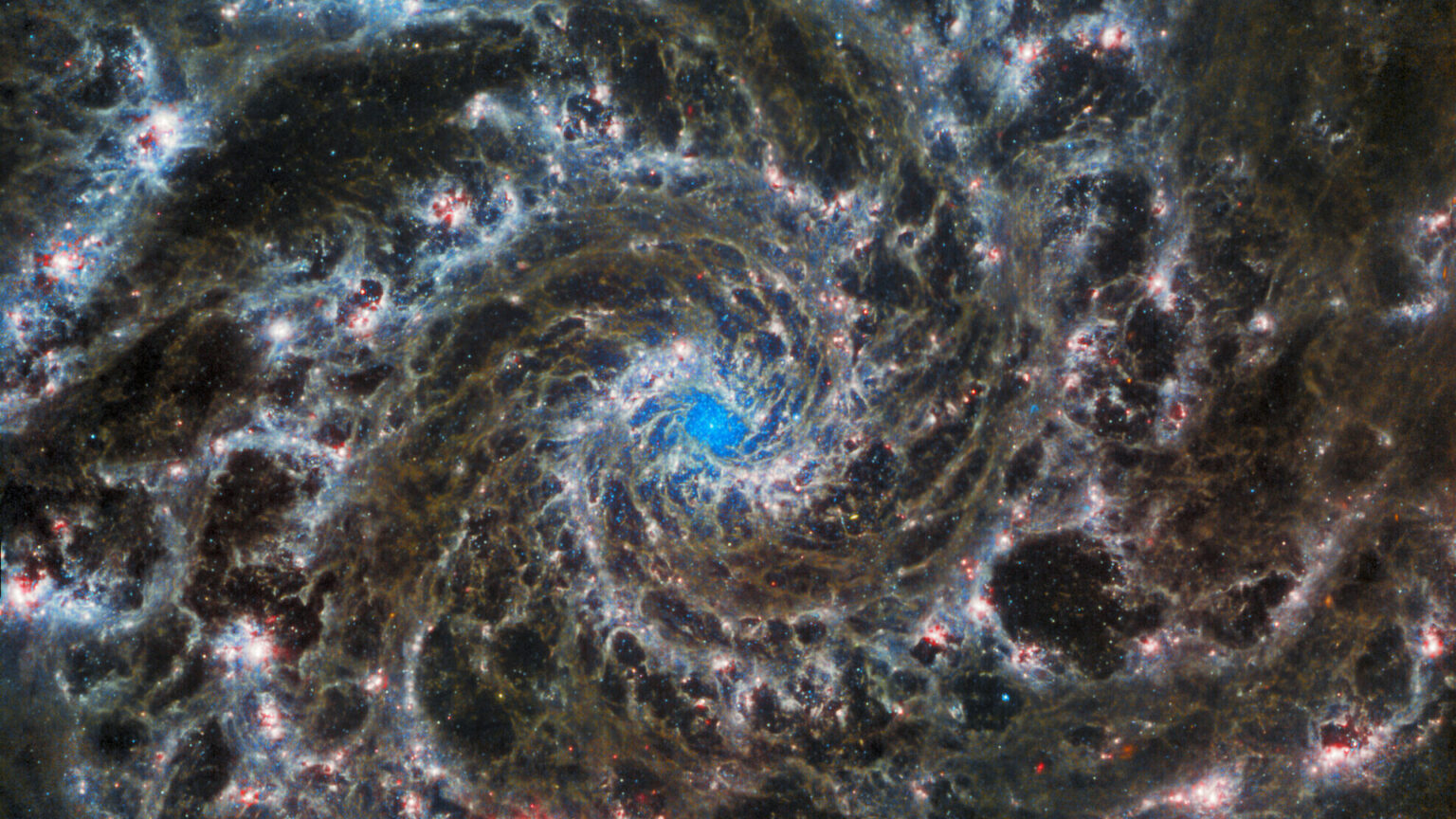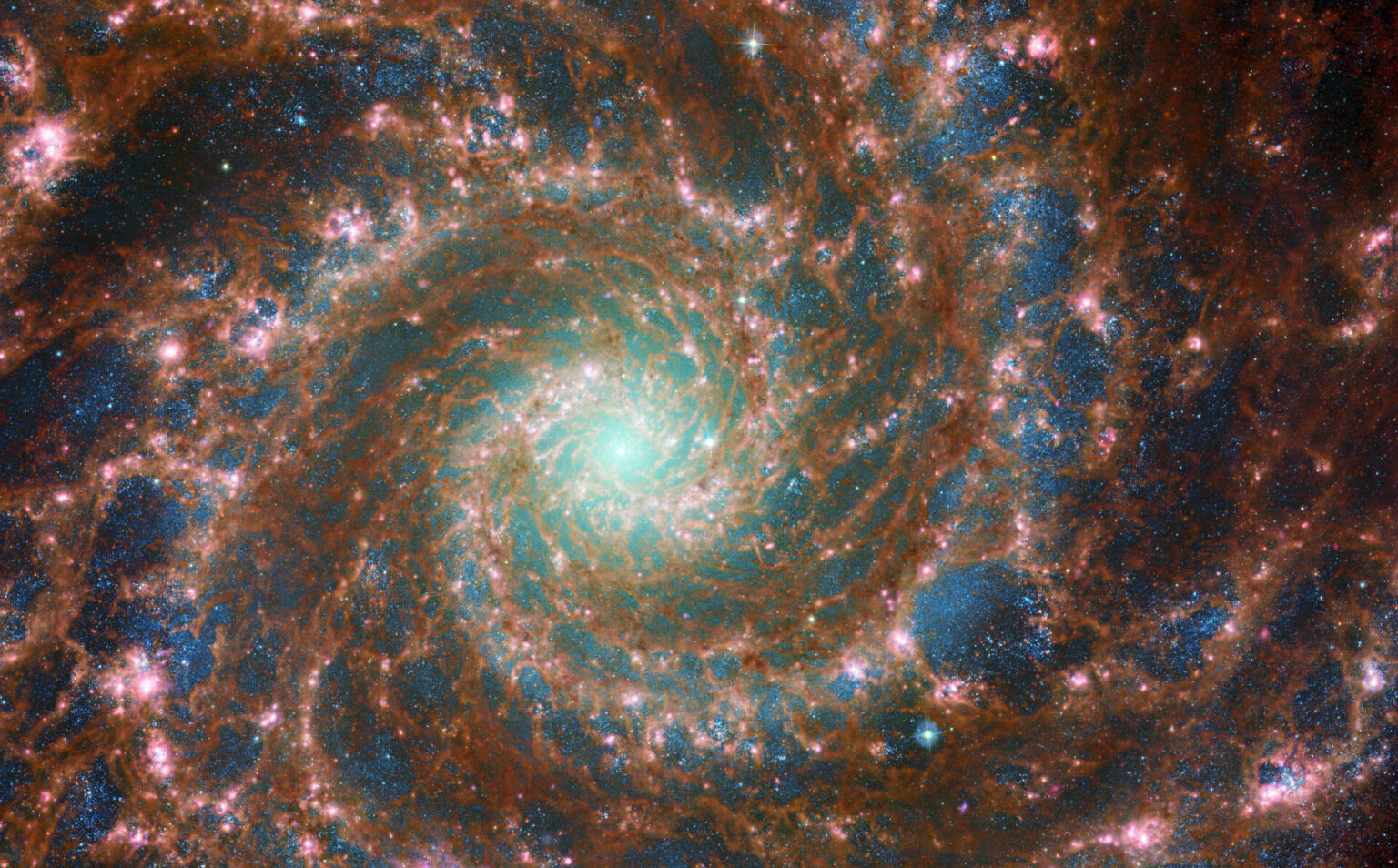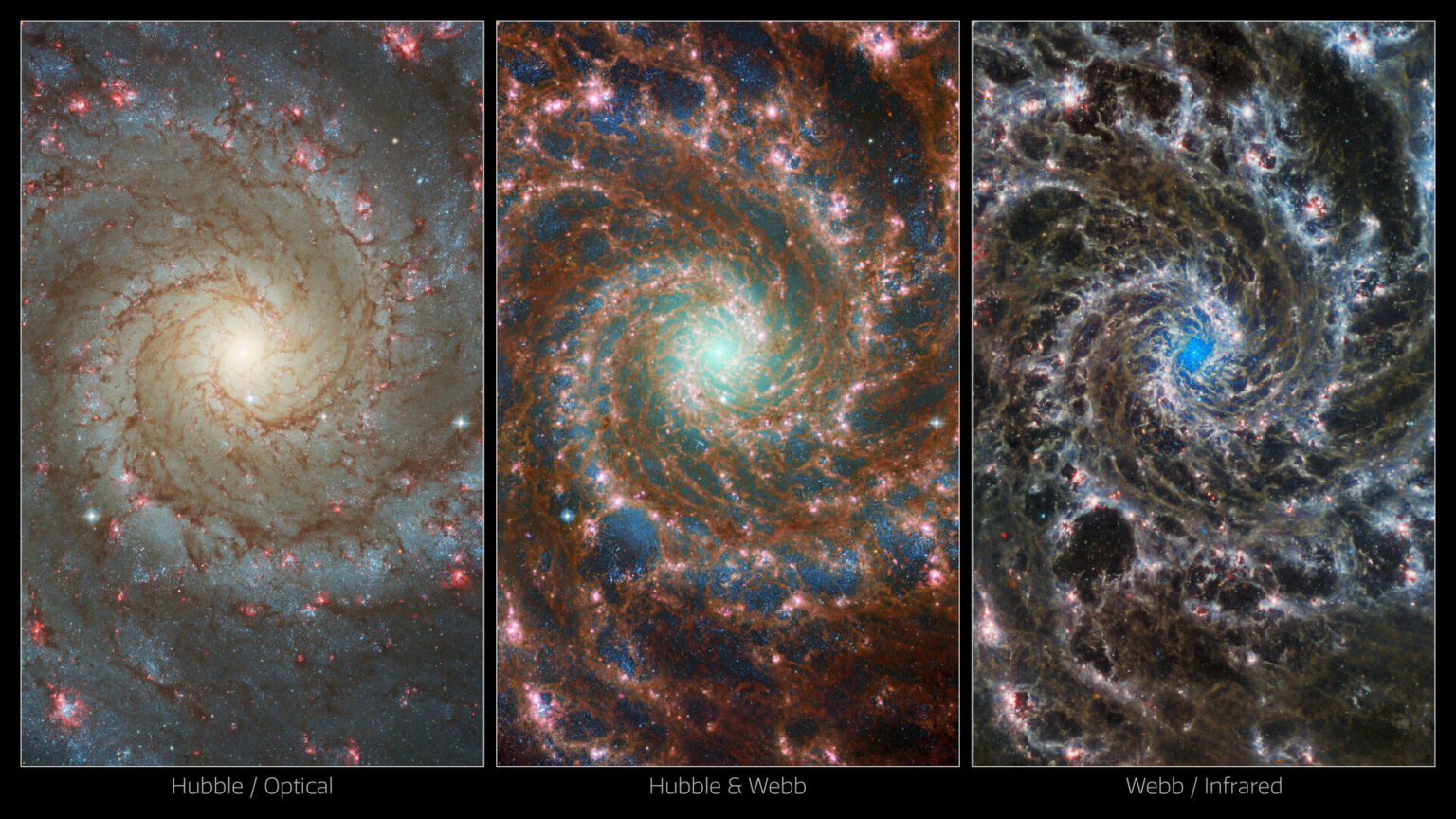Recently NASA released a spectacular image of M74 galaxy (also known as the Phantom Galaxy) taken by the Hubble Orbiting Observatory. But now, the National Aeronautics and Space Administration have enriched our vision releasing a new image of the object shot by the James Webb Space Telescope (JWST).

The Phantom Galaxy is located 32 million light-years from the Milky Way in the direction of the Pisces constellation. The relative proximity, favorable perspective (it is turned “face” to the Earth) and clear spiral structure, which is well visible render it ideal for astronomical observations.
The JWST portrait of M74 was taken with the MIRI instrument. It is designed for shooting in the mid-infrared range. MIRI’s sharp vision revealed many thin gas filaments in M74’s spiral arms. Due to the absence of gas in the center of the galaxy, it also managed to examine the star cluster located there.

The observation of M74 was performed by the international PHANGS project. Its goal is to compile infrared maps of 19 nearby, star-forming galaxies previously studied by Hubble and ground-based observatories.

Previous observations allowed astronomers to identify the brightest regions of active star formation in M74. JWST data will allow to accurately measure the mass and determine the age of star clusters, as well as to get an idea of the nature of dust in interstellar space. This demonstrates the advantages of the joint work of several observatories, each of which is able to perform observations in its part of the electromagnetic spectrum.
Based on materials from https://www.esa.int
